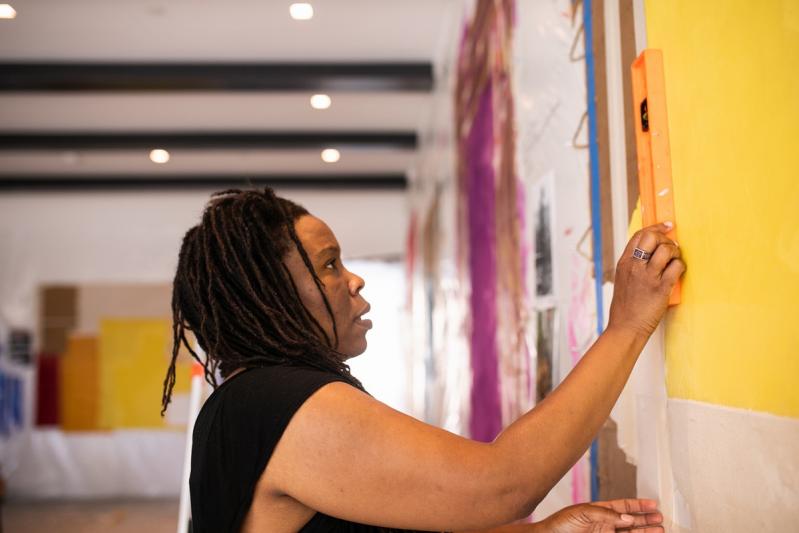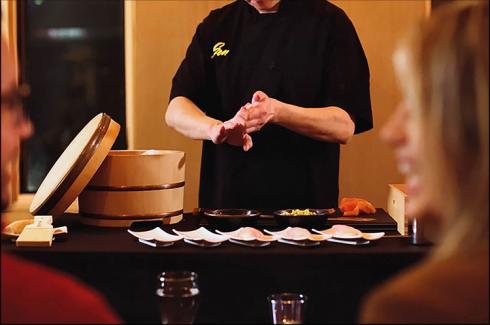Recent years have seen a flurry of efforts to shed light on historic and contemporary conditions of inequality on the East End.
Last fall, members of the Shinnecock Nation occupied a section of historical aboriginal territory near the Sunrise Highway in Hampton Bays for almost a month. The encampment was "a twofold struggle to get Southampton and the state to recognize us as a sovereign nation," Tela Troge, an attorney and tribe member, said at the time.
For the past several years, the Plain Sight Project, initiated by Donnamarie Barnes of the Sylvester Educational Farm on Shelter Island and David Rattray, the editor of The Star, has illuminated the stories of enslaved people on the East End in the mid-17th century.
Another project that addresses the experiences of people of color on Eastern Long Island was undertaken in January 2020 by the artist Tomashi Jackson in conjunction with the Watermill Center, where she was in residence as an Inga Maren Otto Fellow, and the Parrish Art Museum in Water Mill, where, as the 2021 Platform artist, she was charged with responding to the museum as a site for works that transcend disciplinary boundaries.
"Tomashi Jackson: The Land Claim," a multi-part exhibition that sheds light on systemic racial segregation on the East End, will open at the Parrish on Sunday and remain on view there through Nov. 7.
"It has been an amazing and enlightening process to work with Tomashi Jackson," said Corinne Erni, the museum's senior curator, who organized the exhibition with Lauren Ruiz, a curatorial fellow. " 'The Land Claim' has special meaning to me personally and to the Parrish as a cultural institution on the East End. As such, we have an obligation to both show high quality art and to engage with the histories of our communities, including those that are often omitted from the official narrative."
"Jackson is fulfilling both, as she has embarked on incredibly profound research over the past year, spending numerous hours talking with members of the Shinnecock, Black, and Latinx communities of the East End, and bringing their stories to life."
The exhibition begins with "The Interviews," a multi-channel sound work composed entirely of audio from the talks, and situated outdoors at the museum's entrance.
"Vessels of Light" consists of three enlarged photographs extending across the 32-foot south-facing window of the lobby gallery. The images, provided by her interview subjects, include Shinnecock children dressed in regalia at the Powwow grounds in 1993, female descendants of a Southampton family of Black migrant farm workers, and an immigrant family from El Salvador.
The exhibition also includes six large-scale mixed-media paintings whose surfaces are embedded with locally sourced fabrics, potato bags, ground wampum shells from a Shinnecock wampum carver, and soil from the Parrish's site, which was once a potato field.
The painting "Among Fruits" includes a 1950s photograph printed on vinyl, of a worker in a potato field. The vinyl strips overlay a hand-painted image of a Shinnecock Nation member holding a large hen-of-the-woods mushroom. The compositions reflect the themes of the sacredness of land, generational experiences of labor, and the integral role of women in family life.
One gallery is transformed into an interactive study room where visitors can not only gain a deeper understanding of Ms. Jackson's research but also add images, anecdotes, and experiences to the narrative by attaching their own photographs and written accounts to the north wall.
The study room also includes archival photographs provided by families, historical societies, libraries, and news sources, many of them visible in Ms. Jackson's paintings. Those images feature Black and Latinx migrants working on potato farms, Shinnecocks protesting to protect sacred land, reminiscences of enslaved people at Sylvester Manor on Shelter Island, and celebratory family gatherings.
Ms. Jackson's interview subjects included Bonnie Cannon of the Bridgehampton Child Care and Recreational Center; Steven Molina Contreras, a photographer from El Salvador; Jeremy Dennis, a Shinnecock artist; Kelly Dennis, a Shinnecock attorney specializing in federal Indian law; Georgette Grier-Key of the Eastville Community Historical Society; Minerva Perez of Organizacion Latino-Americana of Eastern Long Island; Richard (Juni) Wingfield, a longtime community liaison for the Southampton School District, and Ms. Barnes and Ms. Troge.
A previously recorded conversation among Ms. Jackson, Ms. Dennis, Ms. Erni, and K-Sue Park, a professor at Georgetown University Law Center, will be available tomorrow at 6 p.m. on the museum's YouTube Channel. Viewers must register for the program on the museum's website.
A catalog, including essays by Ms. Erni and Eric N. Mack, an artist; drawings by Martha Schnee, and interviews with Ms. Jackson's research collaborators, will be published in the fall.




